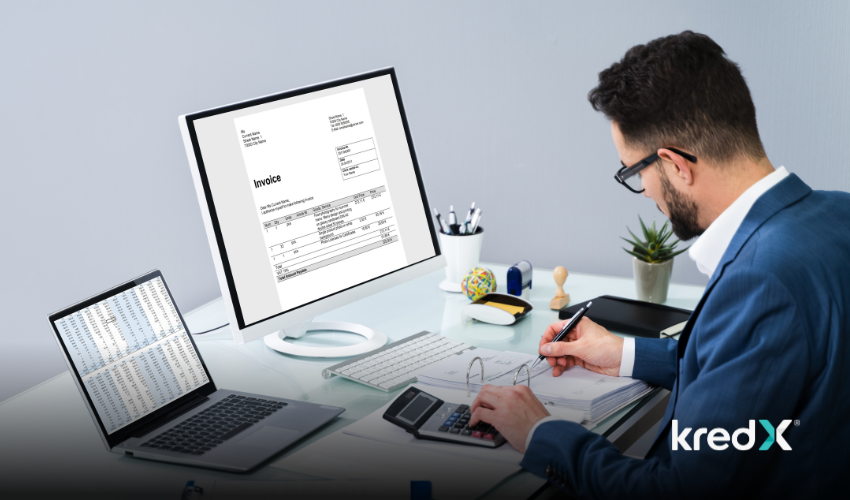
Exclusive Tips to Maximize Benefits of Invoice Discounting for Individuals
Invoice discounting is a financial tool used by businesses to obtain funds in exchange for their unpaid invoices. For businesses, invoice discounting can provide a number of benefits, including improved cash flow, increased working capital, and the ability to take advantage of growth opportunities. However, it is important to analyze the viability of invoice discounting and carefully consider the costs and risks involved.
If you are considering using invoice discounting, there are several tips and tricks that can help you maximize its benefits:
1.Negotiate Favorable Terms
It is important to negotiate favorable terms with your preferred platform, including the discount rate, the payment terms, and any other fees or charges.
2. Use Invoice Discounting Strategically
Invoice discounting should be used strategically to manage cash flow and take advantage of growth opportunities. It is not a long-term solution to financial problems.
3. Maintain Strong Customer Relationships
Invoice discounting relies on the ability of the platform to collect payment from your customers. Maintaining strong relationships with your customers can help ensure prompt payment and reduce the risk of default.
4. Monitor your Credit Risk
Invoice discounting is only viable if your customers have a good credit history and are likely to pay on time. Regularly monitoring your credit risk and the creditworthiness of your customers can help minimize the risk of default.
5. Keep Accurate Records
Keeping accurate records of your invoices and payments is essential for successful invoice discounting. This will help ensure that your factor has the information they need to collect payment from your customers.
Overall, invoice discounting can be a useful tool for businesses looking to manage cash flow and take advantage of growth opportunities. However, it is important to carefully analyze the viability of invoice discounting and seek professional advice before entering into any agreement.
As for analyzing the viability of invoice discounting for a specific business, here are some factors to consider:
1. Cash flow
Invoice discounting can be a useful solution for businesses with inconsistent or delayed cash flow. If a business frequently experiences cash flow gaps, invoice discounting may be a viable option.
2. Creditworthiness
Lenders will evaluate the creditworthiness of a business before offering invoice discounting. If a business has a poor credit score or limited credit history, it may not qualify for this type of financing.
3. Customer base
Invoice discounting relies on the business’s customers paying their invoices on time. If a business has a history of late payments or unreliable customers, invoice discounting may not be a viable solution.
4. Cost
Invoice discounting comes with fees and interest rates that can vary depending on the lender and the business’s creditworthiness. It’s important for businesses to calculate the total cost of invoice discounting and compare it to other financing options to determine if it’s a viable solution.
Advantages of Invoice Discounting:
1. Improved Cash flow
Invoice discounting can provide immediate access to cash, allowing businesses to meet their financial obligations and invest in growth opportunities.
2. Flexibility
Unlike traditional loans, invoice discounting allows businesses to access funds based on their outstanding invoices, providing flexibility in how they use the funds.
3. Confidentiality
Invoice discounting can be a more confidential financing option compared to other forms of financing, as businesses retain control over their accounts receivable and customer relationships.
4. Lower risk
Compared to other forms of financing, invoice discounting carries a lower risk for lenders, as the outstanding invoices serve as collateral.
Disadvantages of Invoice Discounting
Customer relationships: Invoice discounting relies on the business’s customers paying their invoices on time, which can strain customer relationships if not managed properly.
Eligibility: Not all businesses may be eligible for invoice discounting, as it requires a minimum volume of invoices and a good credit history.
Fees and interest: Invoice discounting comes with fees and interest rates, which can be higher than other forms of financing, depending on the lender and the business’s creditworthiness.
Conclusion on Invoice Discounting Benefits: Overall, invoice discounting can be a useful financing solution for businesses with inconsistent or delayed cash flow, as it can provide immediate access to cash based on their outstanding invoices. However, it’s important for businesses to consider the fees, interest rates, and eligibility requirements when deciding whether invoice discounting is a viable solution for their specific financial situation. Proper management of customer relationships and strategic use of invoice discounting can help businesses maximize the benefits of this financing option.



